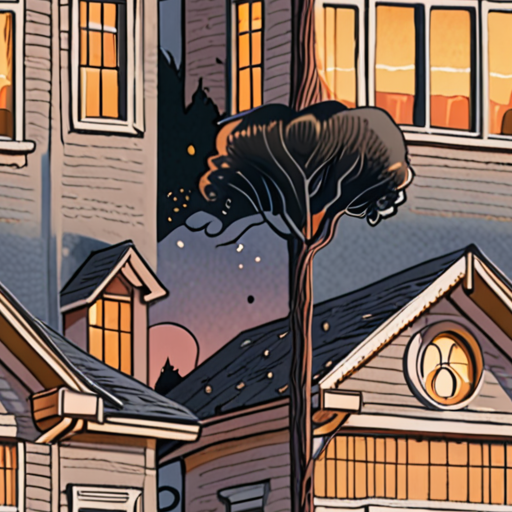As temperatures fluctuate and energy costs rise, homeowners are increasingly seeking effective solutions to optimize their living spaces. One crucial aspect of achieving comfort and reducing expenses lies in understanding home insulation tips, which play a vital role in regulating indoor temperatures and minimizing heat loss. By implementing the right strategies and techniques, individuals can significantly improve their home’s energy efficiency, reduce utility bills, and enjoy a more comfortable living environment.

Maximizing Home Insulation
To effectively maximize home insulation, start by understanding the importance of thermal energy efficiency.
- Thermal energy efficiency refers to the ability of a building to retain heat during winter months and stay cool during summer months.
- A well-insulated home reduces heat loss and minimizes the need for heating and cooling systems.
- This leads to significant cost savings on utility bills and contributes to a reduced carbon footprint.
Simple yet Effective Insulation Tips
- Closing doors and curtains is an effective way to keep warmth within a room.
- Filling drafts by sealing gaps in walls or creating a draft excluder for doors can significantly reduce heat loss.
- Using area rugs to cover floors can also help reduce heat loss and keep rooms warm.
Advanced Insulation Strategies
- Consider installing insulation materials such as fiberglass batts, cellulose, or spray foam in attics, walls, and floors.
- Sealing air leaks around windows, doors, and electrical outlets can further enhance thermal energy efficiency.
- Upgrading to double-glazed windows or installing window inserts can also minimize heat transfer.
Sustainable Insulation Options
- Explore eco-friendly insulation materials such as recycled denim, wool, or plant-based insulation.
- Consider installing radiant barrier roofing to reflect solar radiation and reduce heat gain.
- Invest in smart thermostats that learn your temperature preferences and adjust accordingly.
Professional Assistance
If unsure about implementing these insulation strategies, consult a professional contractor or energy auditor who can assess your home’s unique needs and provide personalized recommendations.
By incorporating these simple and advanced insulation techniques, you’ll be well on your way to maximizing your home’s thermal energy efficiency and reducing your environmental impact.
Insulating a House: A Comprehensive Guide
To properly insulate a house, start by assessing its current insulation levels and identifying areas that need improvement.
- Conduct an Energy Audit
- Choose the Right Insulation Materials
- Install Insulation in the Attic
- Add Insulation to Exterior Walls
- Seal Air Leaks and Gaps
- Consider Radiant Barrier Installation
- Hire a Professional for Complex Jobs
An energy audit can help you identify air leaks, insulation gaps, and other issues that may be affecting your home’s energy efficiency.
Select insulation materials that suit your climate, budget, and building type. Common options include fiberglass batts, cellulose, spray foam, and radiant barrier.
The attic is often the most critical area to insulate, as heat rises and escapes through the roof. Install insulation between rafters or trusses, ensuring a snug fit and adequate coverage.
Exterior walls can benefit from insulation, particularly in colder climates. Consider installing foam board insulation or exterior insulation systems.
Air leaks and gaps can compromise insulation effectiveness. Seal these openings with caulk, spray foam, or weatherstripping to prevent heat loss.
Radiant barriers reflect heat away from your home, reducing cooling costs during summer months. Install them in attics or crawlspaces for optimal benefits.
If you’re unsure about insulation installation or have complex projects, consider hiring a professional contractor experienced in energy-efficient solutions.
Remember to always follow local building codes and regulations when insulating your home. Consult with experts if needed, and enjoy the long-term benefits of improved energy efficiency and reduced utility bills.

Can You Put Too Much Insulation in a House?
The idea of adding extra insulation to a house may seem like a great way to save energy and stay warm, but there is such a thing as too much insulation.
- Over-insulating a house can lead to moisture buildup and mold growth
- This occurs when the interior of the house becomes too tightly sealed, trapping moisture between the insulation layers
- Mold growth can cause serious health issues and damage to the building structure
Risks Associated with Over-Insulation
When a house has too much insulation, it can become difficult for moisture to escape, leading to a buildup of condensation
- Condensation can occur on windows, walls, and ceilings, causing water spots and stains
- Prolonged exposure to moisture can lead to structural damage and compromise the integrity of the building envelope
- In extreme cases, excessive moisture can cause the growth of toxic mold species
Signs of Over-Insulation
Identifying signs of over-insulation is crucial to preventing potential problems
- Visible signs of moisture accumulation, such as water spots or stains
- Unpleasant odors or musty smells emanating from the attic or walls
- Increased humidity levels or condensation on surfaces
Preventing Over-Insulation
To avoid over-insulating a house, consider the following guidelines:
- Consult with a professional to determine the optimal level of insulation for your specific climate and building type
- Avoid adding multiple layers of insulation without assessing the overall thermal performance of the building envelope
- Regularly inspect the attic, walls, and ceilings for signs of moisture accumulation or mold growth
Best Practices for Insulation Installation
For safe and effective insulation installation, follow these best practices:
- Choose high-quality insulation materials that meet local building codes and standards
- Follow manufacturer instructions for installation and ventilation requirements
- Ensure adequate airflow and ventilation to prevent moisture buildup

What Not to Do When Installing Insulation
When it comes to installing insulation, there are several common mistakes that homeowners and DIY enthusiasts often make.
-
Not Measuring Properly
Before purchasing insulation materials, it’s essential to measure the area you need to cover accurately. This ensures you buy enough material to complete the job without wasting money on excess supplies.
-
Ignoring Air Leaks
Air leaks can significantly reduce the effectiveness of insulation. Make sure to seal any gaps around windows, doors, electrical outlets, and switches before installing insulation.
-
Insufficient Attic Ventilation
A well-ventilated attic helps prevent moisture buildup, which can damage insulation and lead to mold growth. Ensure your attic has adequate ventilation to maintain a healthy environment.
-
Incorrect Insulation Type
Selecting the wrong type of insulation for your needs can compromise its effectiveness. Research and choose the suitable insulation material based on factors like climate, budget, and energy efficiency goals.
-
Inadequate Installation Techniques
Improper installation techniques can lead to reduced insulation performance and increased risk of fire hazards. Follow manufacturer instructions and consider hiring a professional if unsure about the process.
-
Failing to Check Local Building Codes
Local building codes and regulations may dictate specific insulation requirements. Verify compliance with local authorities to avoid costly rework or fines.
-
Not Considering Energy Efficiency
While insulation is crucial for energy efficiency, it’s equally important to consider other factors like window treatments, door seals, and HVAC systems. A holistic approach can maximize energy savings and comfort.
By avoiding these common mistakes, you’ll be able to install insulation effectively, ensuring a comfortable and energy-efficient living space.
Risks Associated with Installing Insulation Without a Mask
When installing insulation without a mask, you may be exposing yourself to various health risks.
- Dust inhalation: Cellulose insulation generates a significant amount of dust during installation, which can cause respiratory problems if inhaled.
- Eye irritation: The fine particles of cellulose insulation can easily enter your eyes, causing discomfort and potentially leading to long-term damage.
- Skin irritation: While wearing gloves can minimize skin contact, it’s still possible to experience skin irritation due to the abrasive nature of cellulose insulation.
- Prolonged exposure: Prolonged exposure to dust and particles can exacerbate existing respiratory conditions, such as asthma or chronic obstructive pulmonary disease (COPD).
It’s essential to take necessary precautions when handling insulation materials, including wearing a mask, safety glasses, and protective clothing to minimize the risk of injury or illness.
Precautions to Take When Handling Insulation Materials
- Wear a mask rated N95 or FFP2 to filter out at least 95% of airborne particles.
- Put on safety glasses to protect your eyes from flying debris and dust.
- Wear long-sleeved shirts, pants, and closed-toe shoes to prevent skin exposure.
- Use a dust-reducing spray or wetting agent to minimize dust generation during installation.
Importance of Proper Ventilation
Adequate ventilation is crucial when working with insulation materials to prevent the buildup of dust and particles in the air.
- Open windows and doors to ensure good airflow.
- Use fans to circulate air and reduce stagnation.
- Avoid working in enclosed spaces or areas with poor ventilation.
By taking these precautions and understanding the potential risks associated with installing insulation without a mask, you can ensure a safer working environment and minimize the risk of injury or illness.

Installing Insulation Correctly
To ensure energy efficiency and comfort in your home, installing insulation correctly is crucial.
- Preparation is Key
- Selecting the Right Insulation Type
- Measuring and Cutting Insulation Batts
- Installing Insulation Batt
- Sealing Gaps and Cracks
- Verifying Proper Installation
Before starting the installation process, ensure you have the necessary materials, including insulation batts, a staple gun, and a utility knife.
There are various types of insulation available, including fiberglass, cellulose, and spray foam. Choose the type that suits your needs and budget.
Measure the width of the wall cavity and cut the insulation batts accordingly. Leave a small gap between the batts for expansion.
Hold the insulation batt against the wall, ensuring it is snug and evenly spaced. Use staples to secure the batt in place, taking care not to compress it.
Use caulk or spray foam to seal gaps and cracks around windows, doors, and electrical outlets.
Check the insulation level and ensure it meets the recommended R-value for your climate zone.
Tips and Considerations
When working with insulation, always wear protective gear, including gloves, safety glasses, and a dust mask.
Consider hiring a professional if you’re unsure about any aspect of the installation process.
Conclusion
By following these steps and tips, you can ensure a successful insulation installation that will save you money on energy bills and keep your home comfortable year-round.

0 Comments